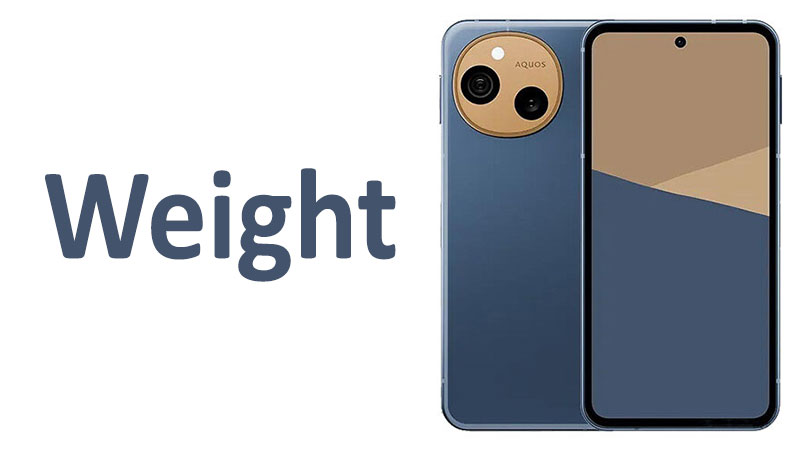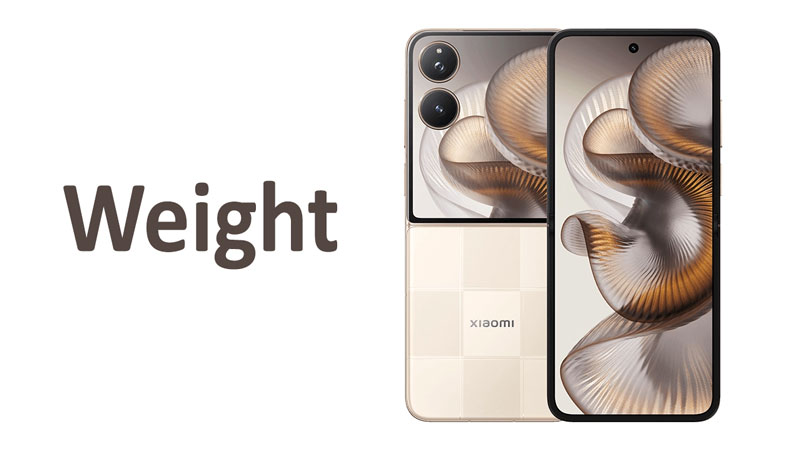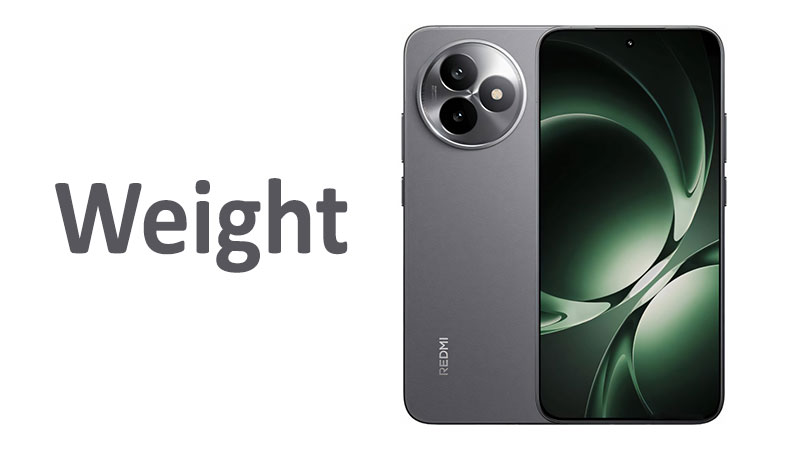The Sharp Aquos sense10 weight stands at a remarkably portable 166 grams, a figure that immediately positions it as a leader in the lightweight, compact 5G smartphone segment. This specific weight is more than just a number on a specification sheet. It represents a careful balance of component choices, material engineering, and user-centric design philosophy. Buyers looking for a powerful yet featherlight daily driver often prioritize this metric. Understanding the exact weight, its ounce conversion, and how it compares to the competition is crucial for making an informed purchasing decision. This article provides an in-depth analysis of the Sharp Aquos sense10’s physical mass, exploring the implications for long-term comfort, portability, and overall build quality.
The trend in modern smartphone design has favored larger screens and bulkier batteries, which typically results in heavier devices. The Sharp Aquos sense10 intentionally bucks this trend. It manages to integrate high-end specifications, including a massive 5,000 mAh battery and a sophisticated Pro IGZO OLED display, while keeping the total mass exceptionally low. This dedication to compactness and lightweight construction is a key selling point for the Aquos sense10 series globally. We will delve into how Sharp achieved this ergonomic feat and examine the real-world benefits for the user.
Understanding the Sharp Aquos sense10 Weight Specification
The primary focus of the Sharp Aquos sense10’s physical design centers on its surprisingly low weight. At just 166 grams, the device offers a level of portability many competitors struggle to match. Consumers often consider weight when determining comfort for extended use, especially for reading or gaming sessions. This section breaks down the precise weight measurements and discusses why this metric holds such importance in the competitive smartphone landscape.
Grams and Ounces: The Exact Figures
The official specification for the Sharp Aquos sense10 confirms a total weight of 166 grams. For consumers accustomed to imperial units, this figure translates directly to approximately 5.86 ounces. This measurement is precise and reflects the final construction of the phone, including its internal components and sealed 5,000 mAh battery. The difference between grams and ounces can sometimes seem minor, but specifying both units ensures clarity for global audiences researching the device.
The 166g mass is consistent across all color variants of the Aquos sense10. It is a benchmark of modern lightweight engineering. This measurement positions the phone firmly in the “lightweight” category, especially for a device featuring a powerful 5G chipset and a large-capacity battery. A typical large-screen flagship phone frequently exceeds 200 grams, making the sense10’s mass a significant advantage for users who prioritize carrying comfort.
Why 166 Grams is Significant in 2025
The significance of the 166-gram weight in the current market cannot be overstated. Smartphone components, particularly batteries and camera modules, continue to grow in size and complexity. These additions generally increase the device’s overall mass. Achieving a sub-170-gram weight while including a 5,000 mAh battery is a remarkable engineering accomplishment. Battery capacity directly affects weight, so Sharp optimized other components to counterbalance the large power unit.
This low mass directly addresses a common consumer complaint: modern phones feel too heavy and cumbersome. Users demand powerful performance without sacrificing portability. The Sharp Aquos sense10 successfully delivers on this demand. The 166g figure contributes to better pocketability and reduced hand fatigue during prolonged usage. For commuters, students, and those constantly holding their phones, the lightweight nature translates into superior ergonomic comfort.
The Engineering Behind the Lightweight Build
Achieving a low weight like 166 grams requires strategic material selection and advanced internal design. Sharp leveraged its expertise in display and battery technology to minimize mass without compromising structural integrity or power output. The phone’s construction provides crucial insight into this optimization process.
Material Science: Aluminum Frame and Back
The Sharp Aquos sense10 utilizes an aluminum frame and back panel. This material choice is pivotal in keeping the weight down. Aluminum offers an excellent strength-to-weight ratio. It provides the necessary rigidity and durability to protect the internal components while being significantly lighter than stainless steel or thick glass typically found in heavier flagship devices. The phone’s dimensions are also compact at 149 x 73 x 8.9 mm, which reduces the total material volume needed.
The use of aluminum contributes to a premium feel that belies the phone’s low mass. This material decision ensures the device can withstand daily wear and tear. Furthermore, the phone meets the demanding MIL-STD-810H/MIL-STD-810G compliant drop resistance standards, proving that lightweight design does not automatically mean fragile construction. Sharp successfully merged durability and portability through smart engineering.
Battery Efficiency vs. Weight
One of the most impressive feats of the Sharp Aquos sense10 is the pairing of the 166-gram weight with a large 5,000 mAh battery. Historically, a battery of this size would add considerable bulk, pushing the device closer to the 180 to 200-gram range. Sharp overcame this challenge by employing their proprietary Pro IGZO OLED display technology. This display is highly energy efficient.
The Pro IGZO OLED technology consumes significantly less power than conventional display panels. This extreme efficiency means the 5,000 mAh battery lasts much longer than it would in a less efficient phone. By optimizing power consumption, Sharp ensures exceptional battery life without needing an even heavier, larger-capacity cell. This synergy between display technology and battery capacity is the hidden factor enabling the phone’s lightweight profile.
Specialized Weight Comparisons
Evaluating a smartphone’s weight requires comparison with its market peers and its predecessors. The 166-gram weight of the Sharp Aquos sense10 stands out, especially when examining its battery size. This comparison highlights Sharp’s competitive advantage in delivering a powerful yet compact device.
Comparing with Predecessors
The Aquos sense series has historically prioritized portability, and the sense10 continues this tradition. Looking at previous models reveals Sharp’s consistent focus on lightweight design. The Sharp Aquos sense8, for instance, weighed approximately 159 grams, slightly less than the sense10. The increase in the sense10’s weight to 166 grams likely accommodates the upgraded camera sensors, the more powerful Snapdragon 7s Gen 3 chipset, and potentially a slight refinement in the thermal management system.
The difference of 7 grams between the sense8 and sense10 is negligible in real-world use. However, it indicates that Sharp maximized the internal space to improve performance while still maintaining a compact device profile. In contrast, the Sharp Aquos sense9 also weighed 166g, suggesting the sense10 maintains the established ergonomic baseline for the series despite substantial hardware upgrades. Sharp consistently proves that users do not need to accept a heavy device for a robust feature set.
Comparison with Mid-Range and Compact Rivals
When we compare the Sharp Aquos sense10 weight to other devices in the mid-range and compact categories, its 166g profile is highly competitive. Many popular mid-range smartphones today, often featuring similar 6.1-inch to 6.5-inch screens and 5,000 mAh batteries, weigh significantly more. For example, some rival devices easily reach 185 to 195 grams.
The heavier devices often use thicker glass backs or larger, less efficient cooling systems, which contribute to the increased mass. The Aquos sense10’s aluminum build and efficient internal layout give it a clear advantage in portability over its plastic and glass counterparts. This focus on lightweight materials makes the sense10 an ideal choice for users seeking relief from the weight of bulkier modern phones. The 166g weight represents a tangible difference in hand.
The Flagship Weight Divide
High-end flagship smartphones often prioritize premium materials like stainless steel and large periscope zoom lenses, resulting in substantially heavier designs. Flagships frequently weigh between 200 and 240 grams. This significant “flagship weight divide” makes the Sharp Aquos sense10 a compelling alternative for users who value lightness over ultimate camera zoom or exotic finishes.
A 200-gram phone feels distinctly heavier than a 166-gram phone after just a few minutes of use. This difference becomes even more pronounced when the phone is carried in a shirt pocket or purse. The sense10 demonstrates that excellent performance—thanks to the Snapdragon 7s Gen 3 and the 240Hz Pro IGZO OLED display—is achievable without the burden of excessive mass. The 166g design is a deliberate counter-movement to the heavy premium phone market.
Pros and Cons of the 166g Weight
The decision to engineer a phone to be exceptionally light brings several benefits and a few potential compromises. A thorough review of these pros and cons helps buyers understand the trade-offs involved in the Sharp Aquos sense10’s design.
Advantages of a Lighter Device
The primary advantage of the 166-gram Sharp Aquos sense10 is superior ergonomics. Extended use, such as watching videos or reading an e-book for an hour, causes far less hand strain. This comfort factor significantly enhances the overall user experience. Users appreciate the easy portability that the low mass provides. The phone slips effortlessly into pockets and bags, making it less noticeable during movement.
The combination of the compact 6.1-inch screen and the light weight makes the phone perfectly suited for one-handed operation. Users can reach the entire screen with their thumb more easily without fearing the phone will slip or tip out of their grasp. This ease of manipulation is a major benefit for people with smaller hands or those who rely heavily on their phone while multitasking. A lighter phone also generally sustains less impact damage from accidental drops, as less kinetic energy is involved.
Potential Drawbacks of Reduced Mass
While lightweight construction offers numerous benefits, it can sometimes introduce perceived drawbacks. Some consumers equate a heavier device with a more “premium” or solid build quality. The 166-gram Sharp Aquos sense10 might initially feel less substantial to users migrating from a much heavier, steel-framed flagship. However, the aluminum build dispels concerns about actual durability, given its MIL-STD rating.
Another potential concern relates to internal component size. Achieving a low weight often involves careful component thinning or space reduction. While the 5,000 mAh battery is large, the thinness of the internal components must accommodate the 8.9mm profile and the light mass. Sharp’s reliance on the ultra-efficient IGZO display mitigates battery-related issues, but some users might worry about sustained, heavy-load performance where thicker phones sometimes offer more elaborate cooling systems. Sharp addresses cooling with an optimized Snapdragon 7s Gen 3 chipset, which runs efficiently.
Key Considerations for Buyers and Readers
Buyers interested in the Sharp Aquos sense10 should consider how the 166g weight influences daily interaction, long-term comfort, and overall value. This metric impacts several crucial aspects of the phone’s function and feel.
Impact on One-Handed Usability and Comfort
The 166g weight is a defining feature of the Aquos sense10’s one-handed usability. The physical dimensions, particularly the 149mm height and 73mm width, combined with the low mass, create a device that balances perfectly in the palm. This makes scrolling, typing, and taking photos with one hand reliable and comfortable. Many modern phones demand two hands for full functionality, but the sense10 prioritizes accessibility and ergonomics.
For individuals who use their phone for extensive reading or content consumption, the reduced hand fatigue is a primary factor. A light phone means less muscle strain over time. This ergonomic design choice makes the Aquos sense10 an attractive option for users seeking a highly portable and comfortable mobile experience, distinct from the brick-like feel of larger, heavier competitors.
Durability and Shock Resistance
The lightweight construction does not equate to fragility in the Sharp Aquos sense10. Sharp ensured that the phone maintains high levels of protection. It boasts an IP68 rating for water and dust resistance, meaning the device can survive submersion in water. Furthermore, the phone complies with the MIL-STD-810G military standard for drop resistance.
This combination of a light aluminum build, strong ingress protection, and military-grade shock resistance provides buyers with confidence. Sharp successfully proved that a smartphone can be both lightweight and exceptionally durable. The 166g device manages to pack a formidable shield against environmental hazards and accidental drops. Buyers gain the benefit of portability without the traditional trade-off of fragility.
The Role of Weight in Market Differentiation
The 166-gram weight of the Sharp Aquos sense10 serves as a powerful market differentiator. In a saturated market, every detail matters, and weight is a rapidly growing concern for consumers. Sharp positions the Aquos sense10 not just as a mid-range phone, but as a premium experience in portability.
The phone appeals directly to two niche but expanding segments: users seeking smaller, compact phones and users prioritizing long battery life with minimal weight. By achieving 5G performance, a stunning 240Hz IGZO display, and a 5,000 mAh battery at just 166 grams, the Aquos sense10 establishes itself as a unique and thoughtfully engineered product. Its lightweight nature is therefore a critical element of its value proposition.
Conclusion
The Sharp Aquos sense10 weight, measured at 166 grams (5.86 ounces), is arguably one of the phone’s most significant competitive advantages. This low mass, achieved through smart use of aluminum for the frame and the integration of the energy-efficient Pro IGZO OLED display, allows Sharp to include a large 5,000 mAh battery without adding prohibitive bulk. The 166g profile delivers exceptional portability, superior one-handed usability, and reduced hand fatigue for users.
This device successfully counters the market trend toward increasingly heavy smartphones, offering a powerful Snapdragon 7s Gen 3 chipset and a high-refresh-rate display in a comfortable, compact form factor. The combination of lightweight design, IP68 water resistance, and MIL-STD drop compliance proves that buyers do not need to compromise durability for portability. The Sharp Aquos sense10 provides a compelling choice for consumers who value comfort and compactness in their daily mobile experience.
Frequently Asked Questions
What is the exact weight of the Sharp Aquos sense10 in grams?
The official and specified weight for the Sharp Aquos sense10 is precisely 166 grams. This weight includes the internal 5,000 mAh battery and all structural components.
How much does the Sharp Aquos sense10 weigh in ounces?
The 166-gram weight of the Sharp Aquos sense10 translates to approximately 5.86 ounces in the imperial system. This makes it one of the lightest 5G phones available with a large battery.
Does the low weight of 166g mean the phone is less durable?
No, the low weight does not indicate low durability. The Sharp Aquos sense10 uses an aluminum body and is certified with an IP68 water and dust resistance rating. It also meets MIL-STD-810G standards for shock resistance.
How does the Aquos sense10’s weight compare to its predecessors?
The Sharp Aquos sense10 is slightly heavier than the Aquos sense8, which weighed 159 grams. However, it maintains the same 166g mass as the Aquos sense9 while incorporating newer, more powerful internal hardware.
Is 166 grams considered heavy for a modern smartphone?
No, 166 grams is considered quite lightweight for a modern smartphone, especially one with a 6.1-inch screen and a large 5,000 mAh battery. Most comparable mid-range and flagship devices weigh over 180 grams.



